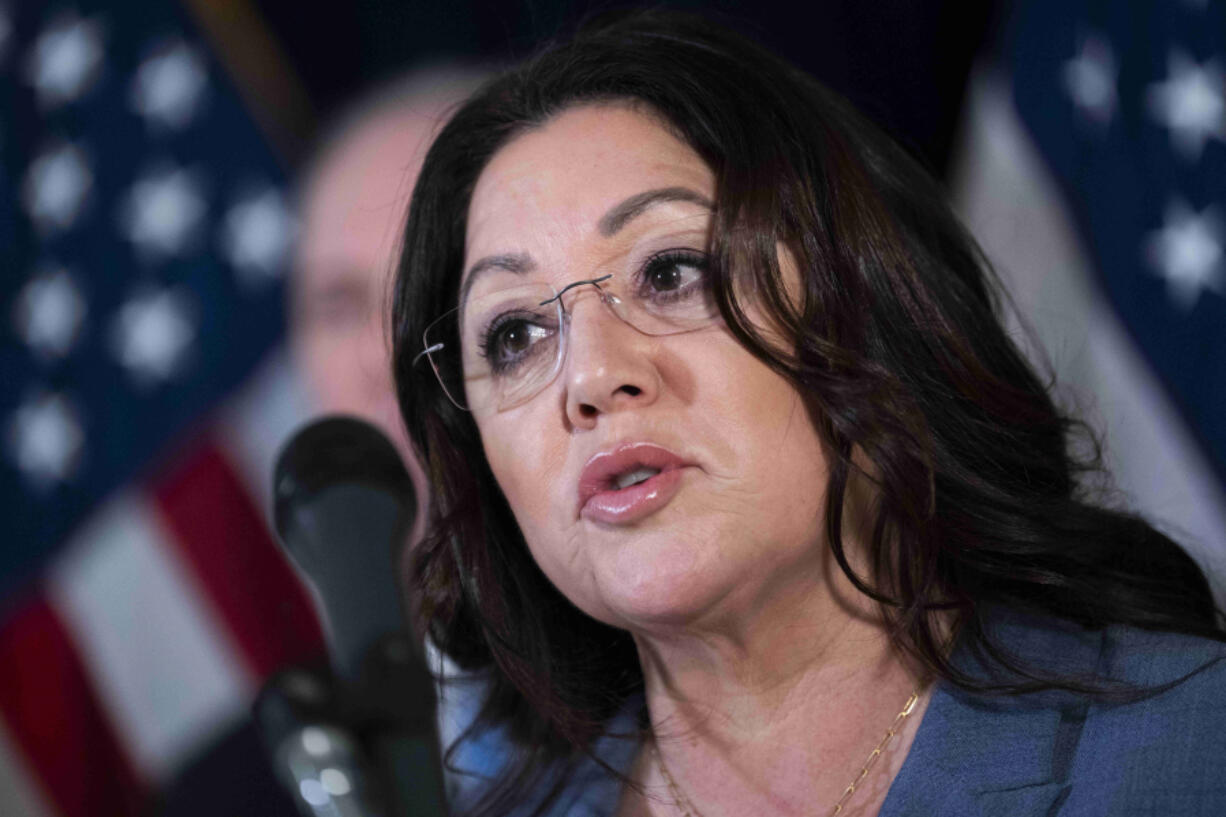With small electorates and local dynamics, past state legislative race results are not typically a critical piece of analyzing a congressional race. But House Democrats are hoping that the past is prologue in one of their top takeover targets in 2024.
Some Democrats have been looking for a new candidate to run in Oregon’s 5th District since Jamie McLeod-Skinner knocked off Rep. Kurt Schrader in the 2022 Democratic primary. McLeod-Skinner went on to lose to Republican Lori Chavez-DeRemer in the general election, although it was by just 2.1 points and without support from outside Democratic money in the final, critical weeks.
McLeod-Skinner is running again in 2024, but she’s trying to tamp down the old narrative that she’s too liberal for the district and new allegations that she abused a campaign aide in the last race. Considering the race is at the center of the House battleground — Inside Elections rates it as a Toss-up — there’s an effort to consolidate support for state Rep. Janelle Bynum.
Bynum and Chavez-DeRemer have already faced off twice in state legislative elections, with Bynum winning both, fueling much of the Democratic optimism about her in the congressional race. But how predictable and applicable are those wins?
“Democrats have reason to take heart from those races,” according to longtime Oregon political reporter Jeff Mapes. “[Bynum] beat Chavez-DeRemer twice in a district heavy with blue-collar Democrats and independents.”
In 2016, Bynum defeated Chavez-DeRemer 51-49% in an open-seat race after Democrat Shemia Fagan decided not to seek reelection. Two years later, Bynum defeated Chavez-DeRemer in a rematch by 8 points. But how impressive were those victories?
In 2016, Bynum ran ahead of the six statewide Democrats by about 2 points, according to data crunched by Bradley Wascher of Inside Elections. Without rounding, Bynum received 50.8% compared with an average of 48.5% for the statewide candidates that cycle.
Two years later, there were fewer statewide races to compare to Bynum’s victory. She received 54%, compared with Democratic Gov. Kate Brown’s 47% in that district. But the overall cycle was even better for Democrats in President Donald Trump’s midterm compared to 2016, muting some of the excitement over Bynum’s performance.
Despite critics labeling her as a weak candidate, McLeod-Skinner outperformed a typical Democrat narrowly in 2022, with a Vote Above Replacement (VAR) score of 0.6, according to Inside Elections. And, again, that was without the party support that usually comes with running in a top-tier race. McLeod-Skinner also overperformed in 2018, when she lost to GOP Rep. Greg Walden in the 2nd District by 17 points, when Brown lost the district by 22 points in her gubernatorial race.
There’s at least one reason to pause before extrapolating results from the state legislative races to the congressional race. The 51st District that Bynum now represents in the legislature is entirely within Clackamas County, outside of Portland. The 5th District she’s vying to represent in Congress includes much of the Willamette Valley east of Interstate 5 and continues into Central Oregon to include fast-growing Bend. The 5th is more than 5,000 square miles in total.
“Of course, C.D. 5 takes in a lot more territory, so these previous elections are far from determinative,” Mapes said.
The size of the electorates will also be dramatically different. The 2016 and 2018 matchups had similar turnouts of 28,142 and 27,526 total votes, compared with the more than 350,000 votes cast in the 5th District in 2022. Turnout could stretch even higher in a presidential year this cycle.
Winning state legislative races has consequences as well.
“Bynum will have to defend her legislative record — lots of votes to cherry-pick — and she’ll face the charge that she’s part of the Democratic machine that has brought homeless encampments, crime, etc. to Oregon,” said Mapes. “Of course that is assuming she wins the primary.”
McLeod-Skinner began the 2024 race as the front-runner in the May 21 primary. A mid-November poll of the likely Democratic primary voters by RMG Research for U.S. Term Limits showed McLeod-Skinner at 41% followed by Bynum (8%) and Metro Council President Lynn Peterson (4%).
Since then, Bynum has tried to consolidate support. Democratic Reps. Andrea Salinas, Earl Blumenauer and Suzanne Bonamici have all endorsed her, along with current Gov. Tina Kotek and past governors Brown and Barbara Roberts. Peterson dropped out in mid-February and endorsed Bynum. EMILY’s List is backing Bynum as well, and the Democratic Congressional Campaign Committee put her on its initial “Red to Blue list,” which is a way to highlight to donors who Democrats in D.C. believe is the strongest candidate in an important race. It is not necessarily a guarantee of future support, including TV ad spending.
Meanwhile, Chavez-DeRemer had $1.6 million in her campaign account at the end of the year, and is awaiting her opponent.
Democrats need a net gain of four seats to win back the majority, and probably need to win seats like Oregon’s 5th to get there. That’s why Democrats are being proactive and getting involved in the primary and believe Bynum has the right stuff to beat Chavez-DeRemer, because she’s done it before.



